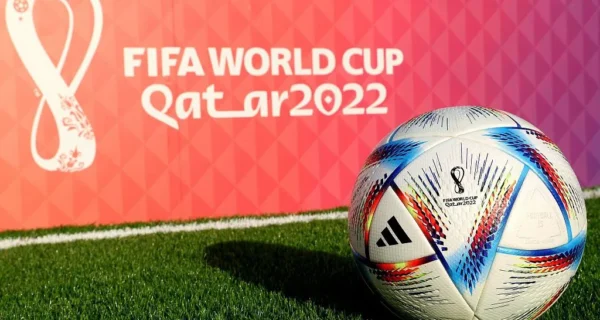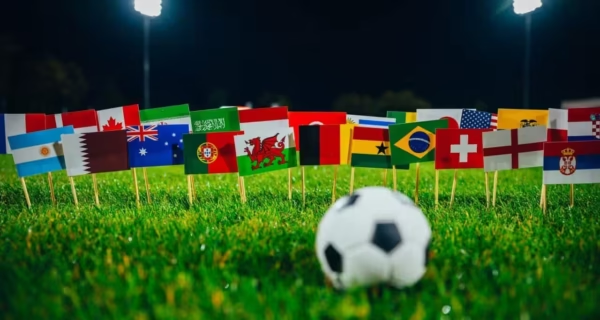This Article Contains
FIFA’s World Cup stands as the most lucrative sporting event on the planet, generating billions in revenue every four years. The 2022 Qatar World Cup shattered previous financial records, cementing the tournament’s status as a money-making powerhouse.
FIFA has transformed this global football celebration into an extraordinary revenue engine that fuels the organization’s operations and development programs worldwide.
FIFA’s Record-Breaking World Cup Revenue
The 2019-2022 financial cycle saw FIFA rake in an unprecedented $7.57 billion in total revenue. This represents an impressive 18% increase compared to the 2015-2018 cycle, which generated $6.42 billion. The Qatar World Cup served as the crown jewel in this record-setting period, despite taking place during challenging global economic conditions following the COVID-19 pandemic.
FIFA surprised even itself with these results, exceeding its original budget projections by $1.13 billion. The organization initially planned for $6.44 billion in revenue but managed to surpass this target significantly, showcasing the growing commercial appeal of international football.
The Qatar 2022 tournament became the most-watched World Cup in history, attracting over five billion viewers across various channels globally. This massive audience, representing more than half the world’s population, delivered extraordinary value to broadcasters and sponsors alike.
FIFA’s Main Revenue Streams
Television Broadcasting Rights
Television broadcasting rights represent the cornerstone of FIFA’s financial model, accounting for 45% of total revenue in the 2019-2022 cycle. This income stream generated a staggering $3.43 billion, a 10% increase compared to the previous four-year period.
Europe emerged as the largest market, contributing $1.06 billion in broadcasting revenue. Asia and North Africa followed closely behind with $1.03 billion. North America generated $519 million, South and Central America added $352 million, and other regions contributed $103 million.
Major broadcasting deals typically span multiple tournament cycles. Fox paid over $400 million for the US broadcasting rights through the 2022 World Cup, outbidding competitors like ESPN. These long-term agreements provide FIFA with stable revenue projections and financial security.
In 2022 alone, television broadcasting rights generated nearly $3 billion for FIFA, demonstrating how crucial the World Cup year becomes for the organization’s financial health.
Marketing Rights
Marketing rights represent the second-largest revenue source for FIFA, generating $1.8 billion during the 2019-2022 cycle (24% of total revenue). This exceeded budget projections by $29 million, highlighting strong commercial interest despite earlier corruption scandals.
FIFA structures its sponsorship program across four tiers:
- FIFA Partners – Top-tier global sponsors including Adidas, Coca-Cola, Hyundai/Kia, Wanda Group, Qatar Airways, Visa, and QatarEnergy.
- FIFA World Cup Sponsors – Tournament-specific sponsors including Budweiser, McDonald’s, Vivo, Hisense, Mengniu, Byju’s, and Crypto.com.
- Regional Supporters – Companies with regional promotional rights.
- National Supporters – Host country sponsors.
For Qatar 2022, FIFA successfully sold all available sponsorship packages at both global and regional levels. The tournament featured 32 commercial partners and sponsors, including new American sponsors for the first time in over a decade.
These partnerships played a crucial role in FIFA’s financial performance, with Qatar-based companies making significant contributions as the host nation leveraged the event for international brand recognition.
Licensing Rights
Licensing rights brought in $769 million during the 2019-2022 cycle, accounting for 10% of FIFA’s total revenue. This revenue stream saw exceptional growth compared to previous cycles.
FIFA generates licensing income through brand licensing contracts, royalties, and similar sources. The growing popularity of FIFA’s digital properties, particularly in gaming and esports, has boosted this revenue category.
The FIFA eWorld Cup tournament exemplifies this success, attracting millions of players and viewers. The 2018 Grand Final drew over 20 million players and generated more than 29 million digital views, representing a 400% increase compared to previous editions.
As FIFA continues to expand its digital footprint and explore new licensing opportunities, this revenue stream shows promising growth potential for future cycles.
Hospitality and Ticket Sales
Ticket sales and hospitality packages generated $949 million during the 2019-2022 cycle, exceeding budget projections by $441 million. This impressive performance reflected strong demand despite pandemic concerns.
For the Qatar World Cup specifically, ticket sales reached $686 million, with 2.95 million tickets sold across the tournament’s 64 matches. Hospitality rights added another $243 million to FIFA’s coffers.
Ticket demand remained robust across all tournaments, but particularly for the World Cup. The top ticket-purchasing nations for Qatar 2022 included Qatar, United States, Saudi Arabia, England, Mexico, UAE, Argentina, France, Brazil, and Germany, demonstrating the tournament’s truly global appeal.
FIFA maintains complete ownership of ticketing rights through a direct subsidiary, allowing the organization to maximize revenue from this stream without sharing profits with intermediaries.
Historical World Cup Revenue Trends
2010 South Africa World Cup
The 2010 World Cup in South Africa generated $3.66 billion for FIFA, excluding ticketing revenue. The tournament incurred expenses of $1.3 billion, resulting in a substantial profit margin.
Television rights played a dominant role, bringing in $2.41 billion. Marketing rights added $1.07 billion, hospitality contributed $120 million, and licensing added $55 million.
FIFA provided financial support of $226 million to the South African Local Organizing Committee. Additionally, FIFA created a $100 million legacy fund for football development in South Africa.
2014 Brazil World Cup
The 2014 World Cup in Brazil generated $4.8 billion in revenue for FIFA against $2.2 billion in expenses, resulting in a $2.6 billion profit over the four-year cycle.
Television rights revenue reached $2.4 billion, sponsorships totaled $1.6 billion, and ticket sales added $527 million. FIFA contributed to the local organizing committee but did not fund the estimated $15 billion in infrastructure costs, which sparked widespread protests in Brazil.
Several stadiums built for this tournament later struggled with utilization issues, raising questions about the long-term economic impact for the host nation.
2018 Russia World Cup
The 2018 World Cup in Russia set a new financial record at the time, generating $5.36 billion in revenue for FIFA. This represented 83% of FIFA’s total $6.42 billion revenue for the 2015-2018 cycle.
Television broadcasting rights for this tournament contributed 95% of all broadcasting revenue for the cycle. The tournament attracted over three billion unique viewers worldwide.
Ticket sales reached $541 million, with 3.03 million spectators attending the 64 matches across 12 stadiums. Hospitality rights added another $148 million to FIFA’s revenue.
2022 Qatar World Cup
The 2022 Qatar World Cup broke all previous financial records as part of FIFA’s $7.57 billion revenue cycle. FIFA President Gianni Infantino announced during the tournament that the organization had exceeded revenue expectations despite global economic challenges.
Qatar Energy joined as a top-tier sponsor, and several Qatari companies including QNB Bank and Ooredoo telecommunications became tournament sponsors. These partnerships significantly boosted FIFA’s marketing revenue.
The tournament attracted nearly three million ticket sales despite concerns about host country controversies. The robust ticket demand demonstrated the World Cup’s enduring appeal regardless of geopolitical circumstances.
Future Revenue Projections
FIFA expects revenues to approach $10 billion for the 2023-2026 cycle, representing another significant increase over the current record. Two major factors will drive this growth.
First, the 2026 World Cup in the United States, Canada, and Mexico will expand from 32 to 48 teams, increasing the total number of matches from 64 to 80. This expansion will create additional broadcasting, ticketing, and sponsorship opportunities.
Second, FIFA has developed a new financial strategy for women’s football, which continues to gain popularity worldwide. The organization plans separate sponsorship deals for the 2023 Women’s World Cup in Australia and New Zealand, tapping into growing commercial interest in the women’s game.
FIFA has already begun securing broadcasting deals for the 2026 tournament. With the competition returning to North America for the first time since 1994, marketers anticipate strong commercial performance in the lucrative U.S. market.
How FIFA Uses Its World Cup Revenue
FIFA reinvests a significant portion of its World Cup revenue back into football development globally. During the 2019-2022 cycle, over 81% of investments went to the broader football community.
Member associations receive substantial financial support through programs like FIFA Forward, which had a budget of $1.75 billion for 2019-2022. These funds help develop football infrastructure, technical programs, and competitions worldwide.
Tournament participants also benefit directly. For Qatar 2022, FIFA allocated $440 million in prize money, with the champions receiving $44 million. FIFA also covers travel and accommodation expenses for teams and support staff.
The organization maintains substantial financial reserves, which reached $2.75 billion at the end of the 2018 cycle. These reserves provide stability during challenging periods, as demonstrated during the COVID-19 pandemic when FIFA supported member associations through financial uncertainty.
FAQs
1. How much profit does FIFA make from the World Cup?
FIFA typically generates billions in profit from each World Cup cycle. For the 2019-2022 cycle including Qatar, FIFA achieved a net result significantly higher than budgeted, allowing the organization to maintain strong reserves of approximately $2.5 billion despite investing heavily in football development programs worldwide.
2. Who gets the money from World Cup ticket sales?
FIFA completely controls World Cup ticket revenue through a direct subsidiary. Unlike some sporting events where venues receive a portion of ticket sales, FIFA maintains ownership of all ticketing rights, which generated over $685 million for the Qatar World Cup alone.
3. Does FIFA pay for stadium construction in host countries?
No, FIFA does not typically fund stadium construction or major infrastructure projects. Host countries bear these costs themselves. For example, Qatar spent approximately $220 billion on World Cup preparations, but FIFA’s direct contribution to the local organizing committee was much smaller.
4. How much does FIFA make from TV rights for the World Cup?
Television broadcasting rights represent FIFA’s largest revenue stream, generating $3.43 billion during the 2019-2022 cycle (45% of total revenue). Major broadcasting deals like Fox’s $400+ million agreement for US rights demonstrate the premium value broadcasters place on World Cup content.
5. How does FIFA distribute World Cup profits?
FIFA distributes profits primarily through development programs for member associations, prize money for participating teams, and operational costs. The FIFA Forward program received a $1.75 billion budget for 2019-2022, while Qatar World Cup participants shared $440 million in prize money.









